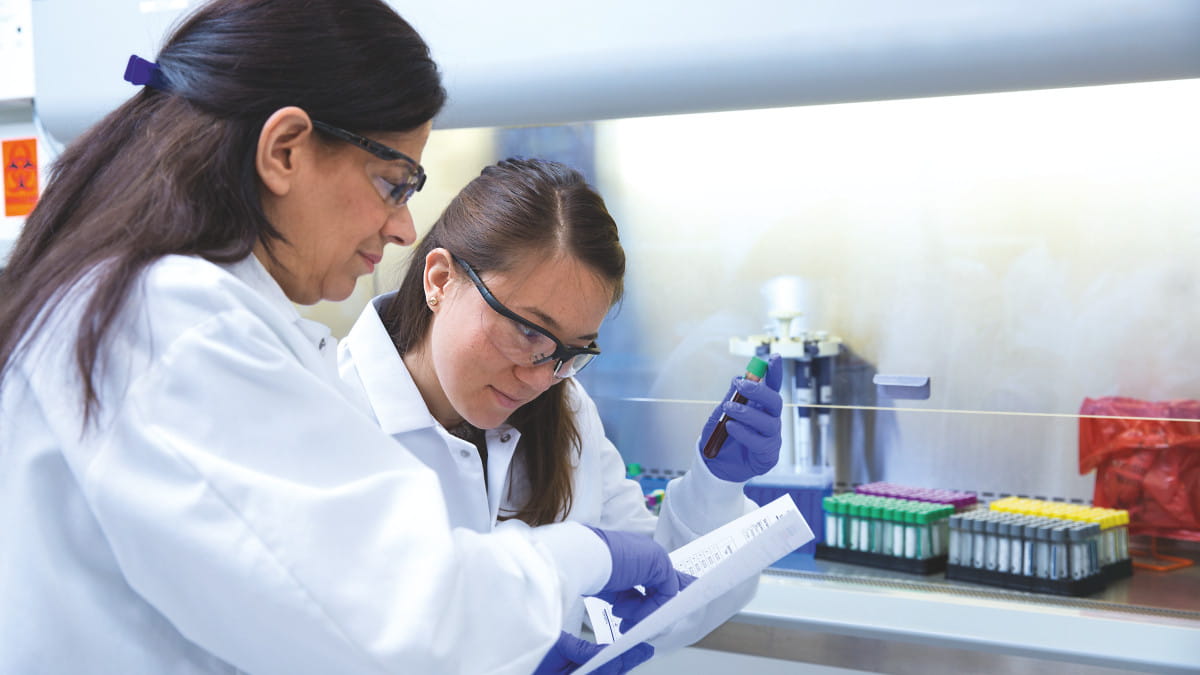
The role of CD8 T cell technology in latent TB detection
During M. tuberculosis infection, CD4 T cells play a critical role in immunological control by secretion of the cytokine IFN-γ. Evidence now also supports a role for CD8 T cells in host defense against M. tuberculosis, as they also play an essential role in MTB immunity.
CD8 T cells produce IFN-γ and other soluble factors to (1–3):
- Suppress M. tuberculosis growth
- Kill infected cells
- Directly lyse intracellular Mycobacteria
Moreover, research indicates that TB-specific CD8 T cells that produce IFN-γ have been:
- More frequently detected in those with active TB disease vs. latent infection (4, 5)
- Associated with recent exposure to TB (6)
- Detectable in active TB subjects with HIV co-infection and young children (7–9)
Webinar: The predictive value of IGRAs
QFT-Plus leads the industry with innovative CD8 T cell technology
QFT-Plus provides the convenience of a single patient visit with electronic reporting, quantitative results and unparalleled accuracy.
In addition, QFT-Plus measures the cell-mediated immune response to MTB infection from both CD4 and CD8 T cells. Its proprietary antigen tubes, TB1 and TB2, stimulate both CD4 and CD8 T cell responses. TB1 is designed to target cell-mediated responses from CD4 T cells, while TB2 stimulates both CD4 and CD8 T cells. Thus, there’s potential for additional clinical information on the CD8 T cell response to TB infection by subtracting the TB1 from the TB2 tube. Research indicates that the CD8 T cell activity, as measured with TB2-TB1, shows a significant association with recent TB exposure, especially in patients with higher exposure and may prove to be a useful tool in identifying patients with recent latent TB (10).
References
- Turner, J. et al. (1996) Immunology 87, 339.
- Brookes, R.H. et al. (2003) Eur. J. Immunol. 33, 3293.
- Stenger, S. et al. (1998) Science 282, 121.
- Day, C.L. et al. (2011) Functional capacity of Mycobacterium tuberculosis-specific T cell responses in humans is associated with mycobacterial load. J. Immunol. 187, 2222.
- Rozot, V. et al. (2013) Mycobacterium tuberculosis-specific CD8+ T cells are functionally and phenotypically different between latent infection and active disease. Eur. J. Immunol. 43, 1568.
- Nikolova, M. et al. (2013) Antigen-specific CD4- and CD8-positive signatures in different phases of Mycobacterium tuberculosis infection. Diagn. Microbiol. Infect. Dis. 75, 277.
- Chicchio, T. et al. (2014) Polyfunctional T-cells and effector memory phenotype are associated with active TB in HIV-infected patients. J. Infect. 69, 533.
- Ongaya, A. et al. (2013) Mycobacterium tuberculosis-specific CD8+ T cell recall in convalescing TB subjects with HIV co-infection. Tuberculosis 93, S60.
- Lanicioni, C. et al. (2012) CD8+ T cells provide an immunologic signature of tuberculosis in young children. Am. J. Respir. Crit. Care Med. 185, 206.
- Viana Machado, F. et al. (2021) Evaluation of CD8+ response in QuantiFERON-TB Gold Plus as a marker of recent infection. Respir. Med. 185, 106508.
